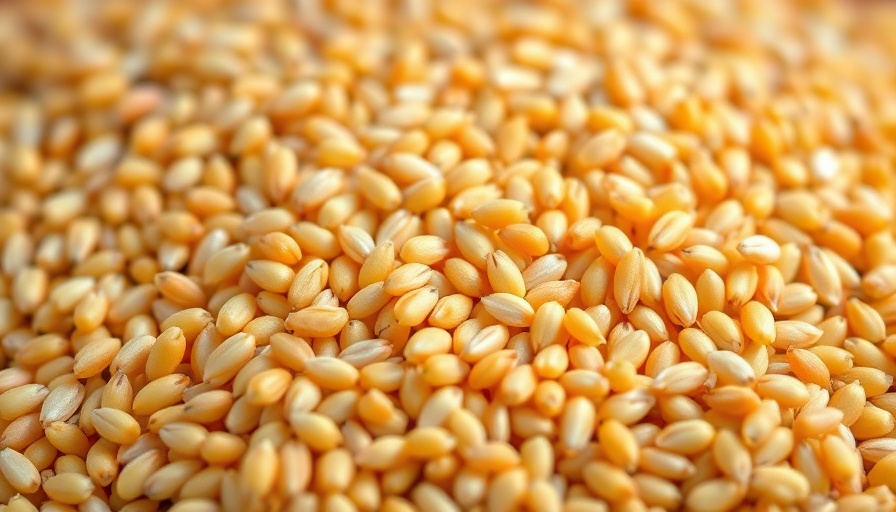
The Rise of Sorghum: A Forgotten Grain
Despite being one of the top five grains produced worldwide, sorghum, often referred to as "the forgotten grain," is typically overlooked in the United States, where it is primarily used for livestock feed and other non-food products. Meanwhile, in countries like Africa and Asia, it remains a dietary staple, cherished for thousands of years.
Unpacking Nutritional Benefits of Sorghum
Sorghum isn’t just another gluten-free option; it boasts a remarkable nutrient profile. A serving can provide up to 43% of your daily protein needs, alongside significant amounts of iron, phosphorus, and dietary fiber. The grain's fiber content is especially beneficial for digestive health, helping to regulate blood sugar and lower cholesterol levels.
Rich in Antioxidants: Sorghum's Secret Weapon
One standout feature of sorghum is its high antioxidant content. Unlike common grains, red and black varieties of sorghum have antioxidant properties comparable to fruits and vegetables. These antioxidants can play a critical role in preventing chronic diseases such as cancer and cardiovascular illnesses. Research shows that a sorghum-based breakfast cereal can contain up to eight times the antioxidant levels of its wheat counterparts.
Varieties of Sorghum: Which One to Choose?
There are multiple types of sorghum—red, black, white, and yellow—with red and black sorghum displaying especially high antioxidant activity. However, in the U.S., white sorghum is more readily available. Unfortunately, many consumers may struggle to find these more nutrient-rich varieties in stores.
Potential Health Risks: Allergies and Digestive Issues
While sorghum is generally safe and beneficial, it can pose allergy risks for some individuals with sensitivities to grasses. Symptoms can include itching, swelling, or even severe reactions in extreme cases. People should also be cautious of the possible digestive challenges some may face when consuming sorghum’s protein, which can be harder to digest compared to other grains.
How to Incorporate Sorghum into Your Diet
Cooking sorghum is straightforward; it can be prepared similarly to rice or used in baked goods as sorghum flour, which is gaining popularity in gluten-free diets. Additionally, it's versatile enough to be made into porridge, served in grain bowls, or enjoyed popped like popcorn. As sorghum's recognition grows, it's becoming more accessible in supermarkets across the U.S., making it easier for households to experiment with this nutrient-rich grain.
Conclusion: Embrace Sorghum for Better Health
For those looking to diversify their grain intake and boost their nutritional profile, sorghum is a compelling option worth exploring. It combines protein, fiber, and an array of antioxidants that can contribute positively to your health. So, why not give sorghum a try? Explore local grocery stores or specialty shops to see how this ancient grain can enrich your meals!
#sorghum, #sorghumnutrition, #sorghumvarieties, #sorghumbrecipes, #sorghumantioxidants
 Add Row
Add Row  Add
Add 




 Add Row
Add Row  Add
Add 


Write A Comment